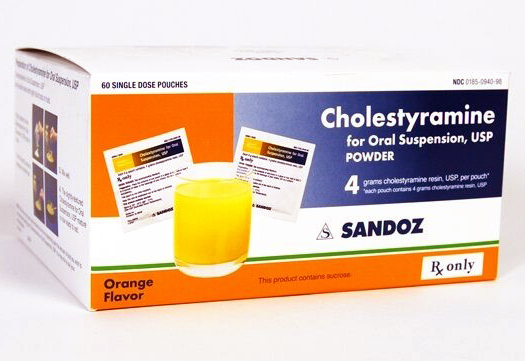Nikhil Prasad Fact checked by:Thailand Medical News Team Nov 05, 2025 1 month, 2 weeks, 1 day, 11 hours, 37 minutes ago
Medical News: Scientists Discover New Way to Eliminate “Forever Chemicals” Faster
A new study by researchers from the University of Gothenburg and the Sahlgrenska Academy in Sweden has uncovered that certain commonly used cholesterol-lowering drugs can help the human body eliminate toxic “forever chemicals,” scientifically known as per- and polyfluoroalkyl substances (PFAS), much faster than previously thought. The discovery could mark a significant step forward in protecting public health against these persistent pollutants that linger in human tissue for decades. In this
Medical News report, we look deeper into how these medications may help detoxify the body from PFAS exposure.
 Cholesterol-Lowering Drugs Found to Speed Up PFAS Removal from the Body
Understanding the PFAS Problem
Cholesterol-Lowering Drugs Found to Speed Up PFAS Removal from the Body
Understanding the PFAS Problem
PFAS are a large group of synthetic chemicals used in thousands of products ranging from non-stick cookware and food packaging to water-repellent clothing and firefighting foams. They are designed to resist heat, oil, and water—qualities that also make them nearly impossible to break down in nature or inside the human body. Because of this, PFAS are called “forever chemicals.” Over time, they accumulate in the bloodstream, liver, and other organs, leading to health issues such as high cholesterol, hormone disruption, immune dysfunction, and even certain cancers.
Communities across the world have been found with dangerously high PFAS levels in drinking water, prompting scientists to search for safe methods to reduce PFAS levels in exposed individuals. This Thailand Medical News report highlights how Swedish researchers have found hope in medications already available on the market.
The Swedish Study and Its Design
The research team from the University of Gothenburg and the Sahlgrenska Academy conducted their study in the small town of Ronneby, Sweden, a region known for severe PFAS contamination in its water supply. They selected ten adult volunteers aged 25 to 47 who had elevated PFAS levels due to long-term exposure. The study was structured over two 12-week periods. During the first phase, participants received no medication to measure the body’s natural PFAS clearance rate. In the second phase, they were given either cholestyramine or colesevelam—two bile acid sequestrant drugs typically prescribed to lower cholesterol levels.
Researchers collected and analyzed blood, urine, and fecal samples throughout the study to assess how much PFAS was being eliminated. The results were striking.
Key Findings
During the non-medicated phase, PFAS levels in participants dropped only slightly—just a few percent over three months, confirming that PFAS leave the body very slowly under normal circumstances. However, when participants began taking cholestyramine or colesevelam, PFAS levels dropped dramatically. In some individuals, concentrations of certain PFAS compounds fell by as much as 40% in only 12 weeks.
<
;br />
Cholestyramine, which works by binding bile acids in the intestines to prevent their reabsorption, was found to bind to PFAS as well, effectively flushing them out through the digestive system. Colesevelam, a newer bile acid sequestrant, also produced strong results—marking the first time this medication has been proven effective in removing PFAS from the body. This dual discovery suggests that both drugs may work by the same mechanism, intercepting PFAS compounds before they are reabsorbed into the bloodstream.
Why This Discovery Matters
PFAS exposure is now recognized as a global health crisis, and natural elimination from the body can take decades. The Swedish findings suggest that certain existing medications could potentially shorten this process to months or even weeks, particularly for people exposed to high levels of PFAS through contaminated water or occupational hazards. The implications are profound: if larger studies confirm these results, doctors may soon have an accessible and affordable medical tool to help detoxify patients without resorting to experimental treatments.
What Scientists Still Need to Learn
While these results are promising, the researchers cautioned that their work is preliminary. The study was small, involving only ten participants, and it did not determine whether faster PFAS removal translates to improved health outcomes. Larger, long-term clinical trials are necessary to verify safety, effectiveness, and possible side effects. The team also aims to study how different PFAS compounds respond to various medications and whether certain combinations can enhance detoxification even more.
Final Thoughts
This breakthrough shows how old medicines can have new purposes. Drugs like cholestyramine and colesevelam, originally designed for cholesterol management, may soon play a role in combating one of the world’s most stubborn pollutants. Although much research remains before these findings can be applied broadly, the discovery represents a crucial step toward giving people affected by PFAS contamination a tangible way to reduce their toxic burden.
The study findings were published in the peer reviewed journal: Environment International.
https://www.sciencedirect.com/science/article/pii/S0160412025005458
For the latest on PFAS, keep on logging to Thailand
Medical News.
Read Also:
https://www.thailandmedical.news/articles/health-news
